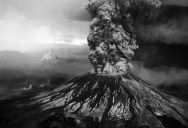This Day In History – May 18th

NAPOLEON PROCLAIMED EMPEROR OF THE FRENCH – MAY 18, 1804

Artwork by Jacques-Louis David
Napoleon Bonaparte (15 August 1769 – 5 May 1821) was a military and political leader during the latter stages of the French Revolution. As Napoleon I, he was Emperor of the French from 1804 to 1815. His legal reform, the Napoleonic code, has been a major influence on many civil law jurisdictions worldwide, but he is best remembered for the wars he led against a series of coalitions, the so-called Napoleonic Wars, during which he established hegemony over much of Europe and sought to spread revolutionary ideals.
Napoleon was born in Corsica to parents of noble Italian ancestry and trained as an artillery officer in mainland France. In 1799, he staged a coup d’état and installed himself as First Consul; five years later the French Senate proclaimed him emperor on May 18th, 1804. In the first decade of the 19th century, the French Empire under Napoleon engaged in a series of conflicts—the Napoleonic Wars—involving every major European power. After a streak of victories, France secured a dominant position in continental Europe, and Napoleon maintained the French sphere of influence through the formation of extensive alliances and the appointment of friends and family members to rule other European countries as French client states. Napoleon’s campaigns are studied at military academies throughout much of the world.
The French invasion of Russia in 1812 marked a turning point in Napoleon’s fortunes. His Grande Armée was badly damaged in the campaign and never fully recovered. In 1813, the Sixth Coalition defeated his forces at Leipzig; the following year the Coalition invaded France, forced Napoleon to abdicate and exiled him to the island of Elba. Less than a year later, he escaped Elba and returned to power, but was defeated at the Battle of Waterloo in June 1815. Napoleon spent the last six years of his life in confinement by the British on the island of Saint Helena. An autopsy concluded he died of stomach cancer. [Source: Wikipedia]

Artwork by Jean Auguste Dominique Ingres

Tomb of Napoleon Bonaparte in Hôtel des Invalides in Paris – Photograph by Willtron
POPE JOHN PAUL II IS BORN – MAY 18, 1920

Pope John Paul II, born Karol Józef Wojty?a (18 May 1920 – 2 April 2005), known as Blessed John Paul II since his beatification on May 1, 2011, reigned as Pope of the Catholic Church and Sovereign of The Holy See from 16 October 1978 until his death on 2 April 2005, at 84 years and 319 days of age. His was the second-longest documented pontificate, which lasted 26 years and 168 days; only Pope Pius IX (1846–1878) who served 31 years, has reigned longer. Pope John Paul II is the only Slavic or Polish pope to date, and was the first non-Italian Pope since Dutch Pope Adrian VI (1522–1523).
John Paul II has been acclaimed as one of the most influential leaders of the 20th century. It is widely held that he was instrumental in ending communism in his native Poland and eventually all of Europe. Conversely, he denounced the excesses of capitalism. John Paul II is widely said to have significantly improved the Catholic Church’s relations with Judaism, Islam, the Eastern Orthodox Church, and the Anglican Communion. Though criticiZed by progressives for upholding the Church’s teachings against artificial contraception and the ordination of women, he was also criticized by traditionalists for his support of the Church’s Second Vatican Council and its reform of the Liturgy as well as his ecumenical efforts. Since his death, he has been criticized for failing to act on accusations of sexual child abuse by priests, including those against founder of Legion of Christ Marcial Maciel.
He was one of the most-travelled world leaders in history, visiting 129 countries during his pontificate. He spoke Italian, French, German, English, Spanish, Portuguese, Ukrainian, Russian, Croatian, Esperanto, Ancient Greek and Latin as well as his native Polish. As part of his special emphasis on the universal call to holiness, he beatified 1,340 people and canonised 483 saints, more than the combined tally of his predecessors during the last five centuries. On 19 December 2009, John Paul II was proclaimed venerable by his successor Pope Benedict XVI. [Source: Wikipedia]

COCHRAN FIRST WOMAN TO BREAK SOUND BARRIER – MAY 18, 1953

Jackie Cochrane in her record-setting Canadair F-86, talking with Charles E. Yeager – Photograph by USAF
Jacqueline Cochran (May 11, 1906 – August 9, 1980) was a pioneer American aviator, considered to be one of the most gifted racing pilots of her generation. She was an important contributor to the formation of the wartime Women’s Auxiliary Army Corps (WAAC) and Women Airforce Service Pilots (WASP). Known by her friends as “Jackie,” and maintaining the Cochran name, she flew her first major race in 1934. In 1937, she was the only woman to compete in the Bendix race. She worked with Amelia Earhart to open the race for women.
She was also the first woman to land and take off from an aircraft carrier, the first woman to reach Mach 2, the first woman to pilot a bomber across the North Atlantic (in 1941), the first pilot to make blind (instrument) landing, the only woman to ever be President of the Federation Aeronautique International (1958–1961), the first woman to fly a fixed-wing, jet aircraft across the Atlantic, and the first pilot to fly above 20,000 feet with an oxygen mask. At the time of her death, no pilot, man or woman, held more speed, distance or altitude records in aviation history, than Jackie Cochran.
Encouraged by then-Major Chuck Yeager, with whom she shared a lifelong friendship, on May 18, 1953, at Rogers Dry Lake, California, Cochran flew a Canadair F-86 Sabre jet borrowed from the Royal Canadian Air Force at an average speed of 652.337 mph, becoming the first woman to break the sound barrier. [Source: Wikipedia]

APOLLO 10 LAUNCHES – MAY 18, 1969

Photograph by NASA
Apollo 10 was the fourth manned mission in the American Apollo space program. It was an F type mission—its purpose was to be a “dry run” for the Apollo 11 mission, testing all of the procedures and components of a Moon landing without actually landing on the Moon itself.
The mission included the second crew to orbit the Moon and an all-up test of the lunar module (LM) in lunar orbit. The LM came to within 8.4 nautical miles (15.6 km) of the lunar surface during practice maneuvers. According to the 2002 Guinness World Records, Apollo 10 set the record for the highest speed attained by a manned vehicle at 39,897 km/h (11.08 km/s or 24,791 mph) during the return from the Moon on May 26, 1969. Apollo 10 carried the first color television camera inside the spacecraft, and made the first live color TV broadcasts from space. [Source: Wikipedia]

A view of Earth rising above the lunar horizon photographed from the Apollo 10 Lunar Module, looking west in the direction of travel. The Lunar Module at the time the picture was taken was located above the lunar farside highlands at approximately 105 degrees east longitude. [Photograph by NASA]
SECOND TALLEST LAND-BASED STRUCTURE EVER BUILT – MAY 18, 1971

The Warsaw radio mast was the world’s tallest structure until its collapse on 8 August 1991. It is the second tallest land-based structure ever built, being surpassed as tallest by the Burj Khalifa, completed in 2010. The mast, which was designed by Jan Polak, was 646.38 metres (2,120.67 ft) tall. Its construction, started in July 1970, was completed on 18 May 1974, and its transmitter entered regular service on 22 July of that year.
It was located in Konstantynów, G?bin, Poland, and was used by Warsaw Radio-Television (Centrum Radiowo-Telewizyjne) for longwave radio broadcasting. The signals from its 2 megawatt transmitters could be received across all of Europe, North Africa and as far away as North America.
On 8 August 1991 at 16:00 UTC a catastrophic failure, caused by an error in exchanging the guy-wires on the highest stock, led to the collapse of the mast. The mast first bent and then snapped at roughly half its height. After the collapse, the KVLY-TV mast outside Fargo, North Dakota, USA, regained its title as the world’s tallest structure, standing 628.8 m (2,063 ft), until the Burj Khalifa exceeded this height in April 2008. [Source: Wikipedia]

ERUPTION OF MOUNT ST. HELENS – MAY 18, 1980

Photograph by USGS/Robert Krimmel
The 1980 eruption of Mount St. Helens, a stratovolcano located in Washington state, in the United States, was a major volcanic eruption. The eruption was the only significant one to occur in the contiguous 48 U.S. states since the 1915 eruption of Lassen Peak in California. The eruption was preceded by a two-month series of earthquakes and steam-venting episodes, caused by an injection of magma at shallow depth below the volcano that created a huge bulge and a fracture system on Mount St. Helens’ north slope. USGS scientists convinced the authorities to close Mount St. Helens to the general public and to maintain the closure in spite of pressure to re-open it; their work saved thousands of lives.
An earthquake at 8:32:17 a.m. PDT (UTC?7) on Sunday, May 18, 1980, caused the entire weakened north face to slide away, suddenly exposing the partly molten, gas- and steam-rich rock in the volcano to lower pressure. The rock responded by exploding a hot mix of lava and pulverized older rock toward Spirit Lake so fast that it overtook the avalanching north face.
An eruption column rose 80,000 feet (24,400 m) into the atmosphere and deposited ash in 11 U.S. states. At the same time, snow, ice and several entire glaciers on the volcano melted, forming a series of large lahars (volcanic mudslides) that reached as far as the Columbia River, nearly fifty miles (eighty kilometers) to the southwest. Less severe outbursts continued into the next day only to be followed by other large but not as destructive eruptions later in 1980.
Fifty-seven people and thousands of animals were killed. Hundreds of square miles were reduced to wasteland, causing over a billion U.S. dollars in damage ($2.74 billion in 2007 dollars), and Mount St. Helens was left with a crater on its north side. At the time of the eruption, the summit of the volcano was owned by the Burlington Northern Railroad, but afterward the land passed to the United States Forest Service. The area was later preserved, as it was, in the Mount St. Helens National Volcanic Monument. [Source: Wikipedia]

Photograph by USGS

Photograph by AP Photo/USGS, Lyn Topinka

Photograph by USGS




